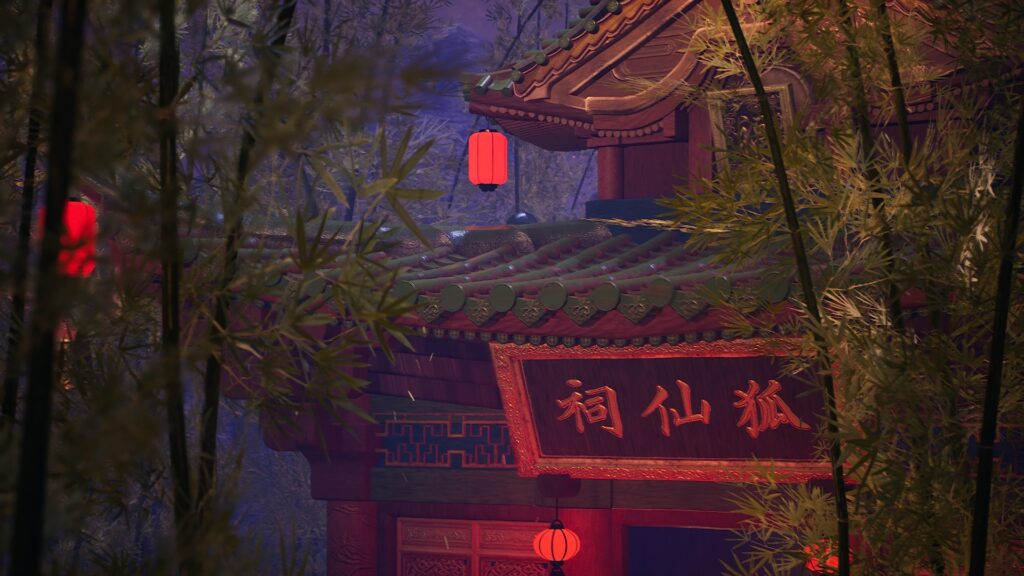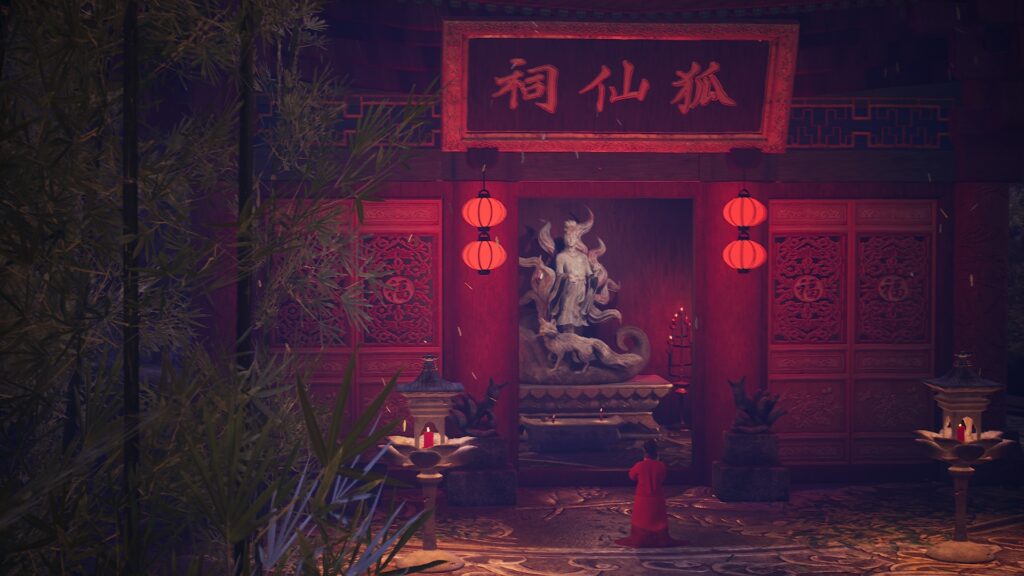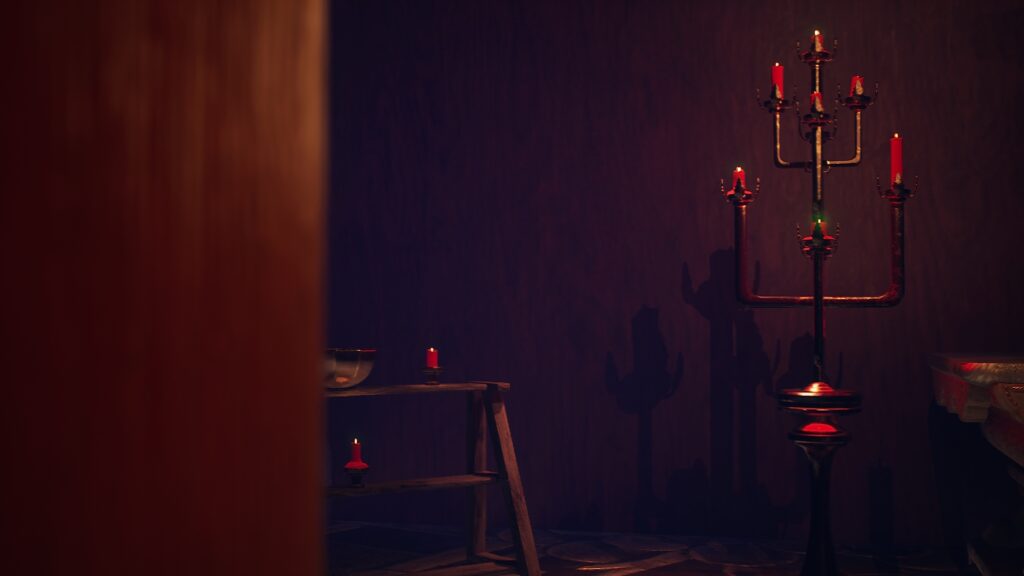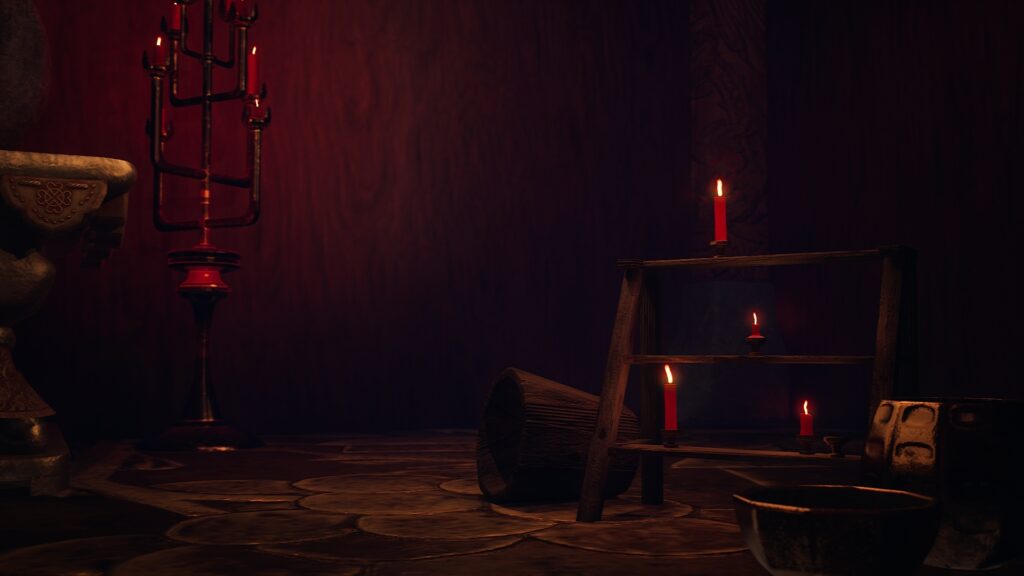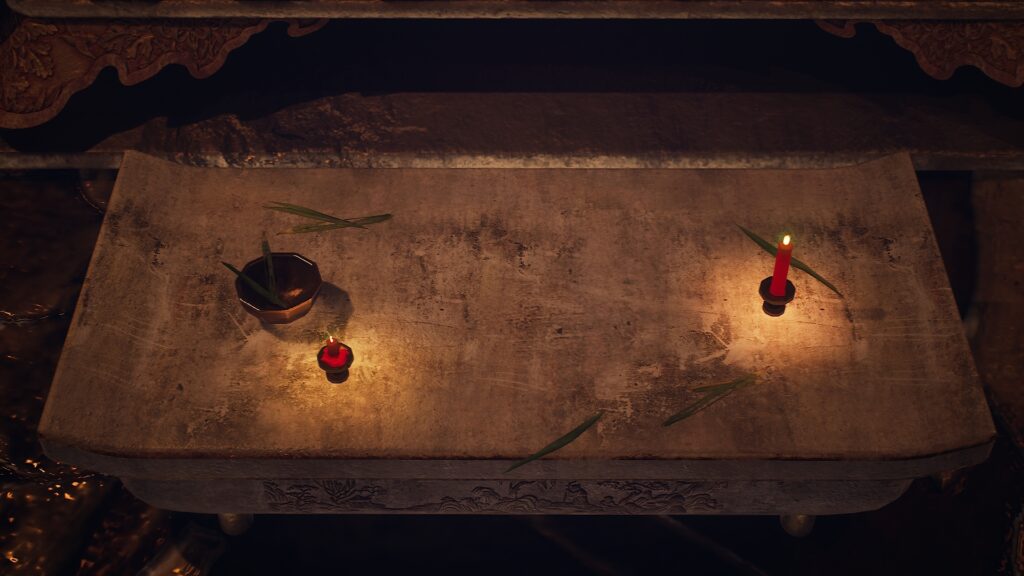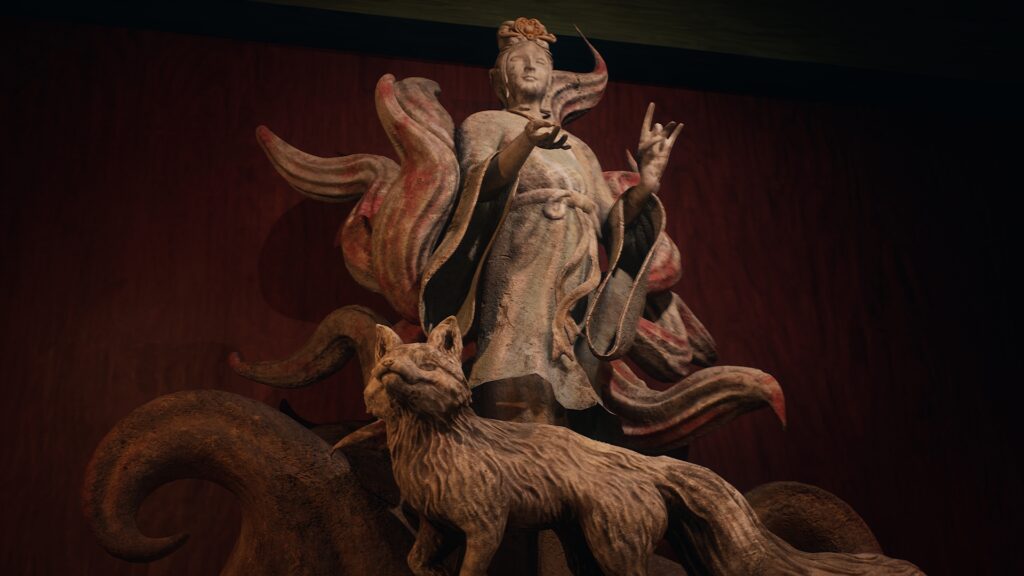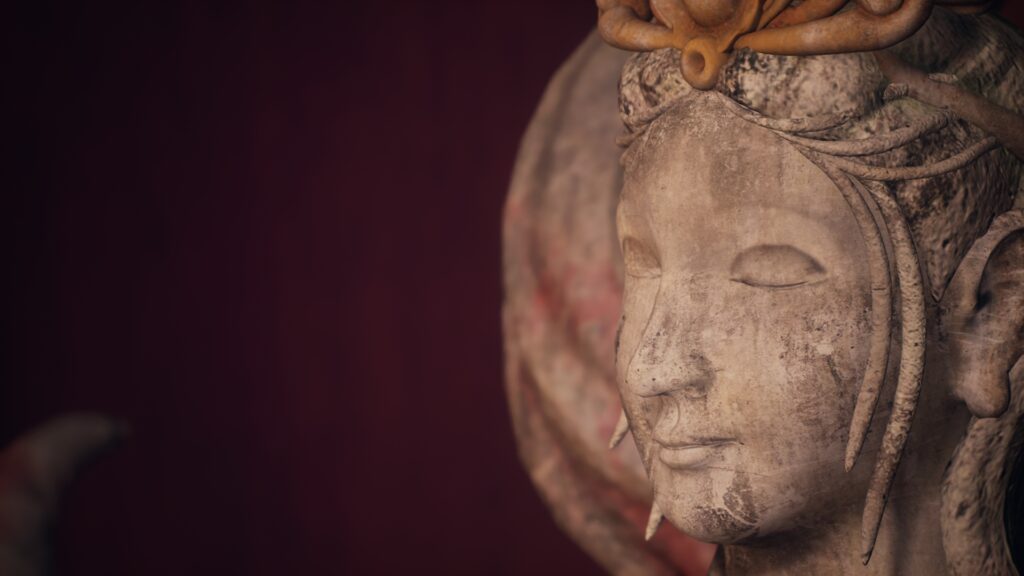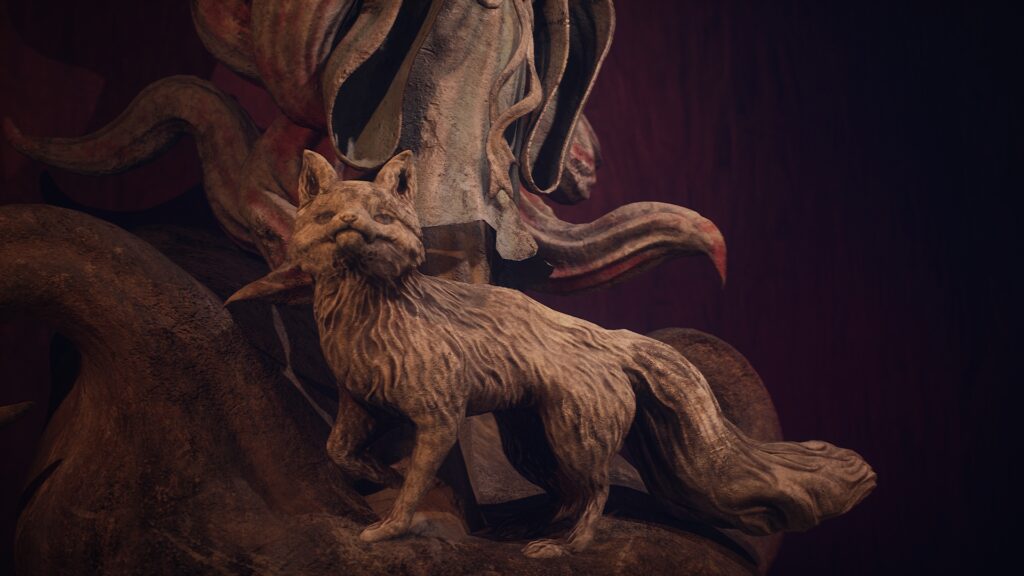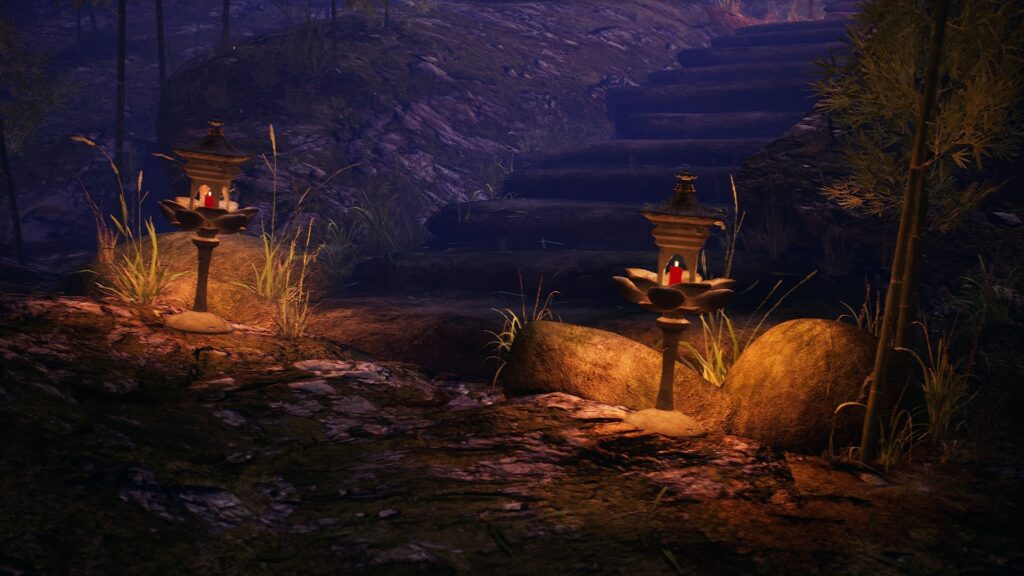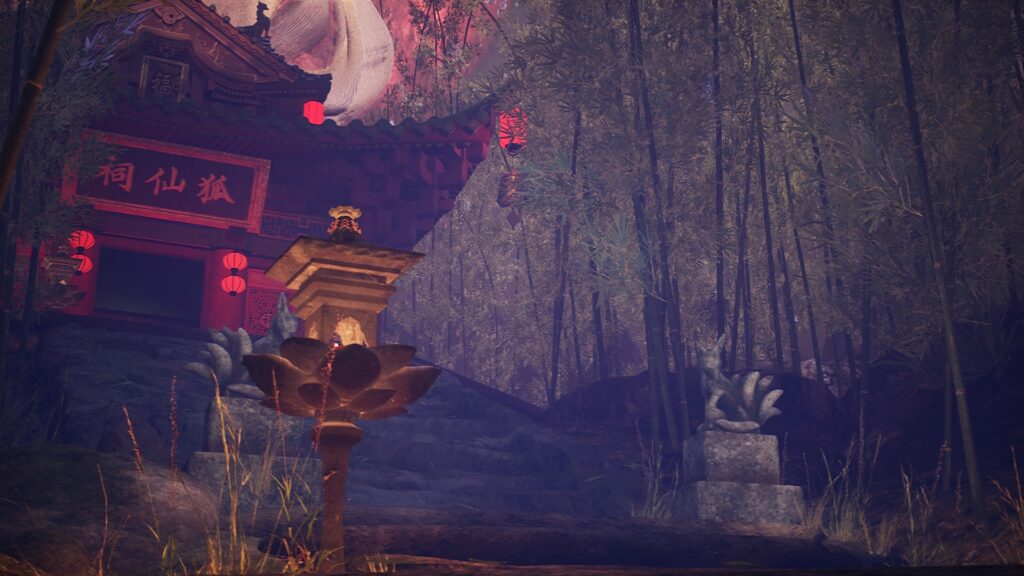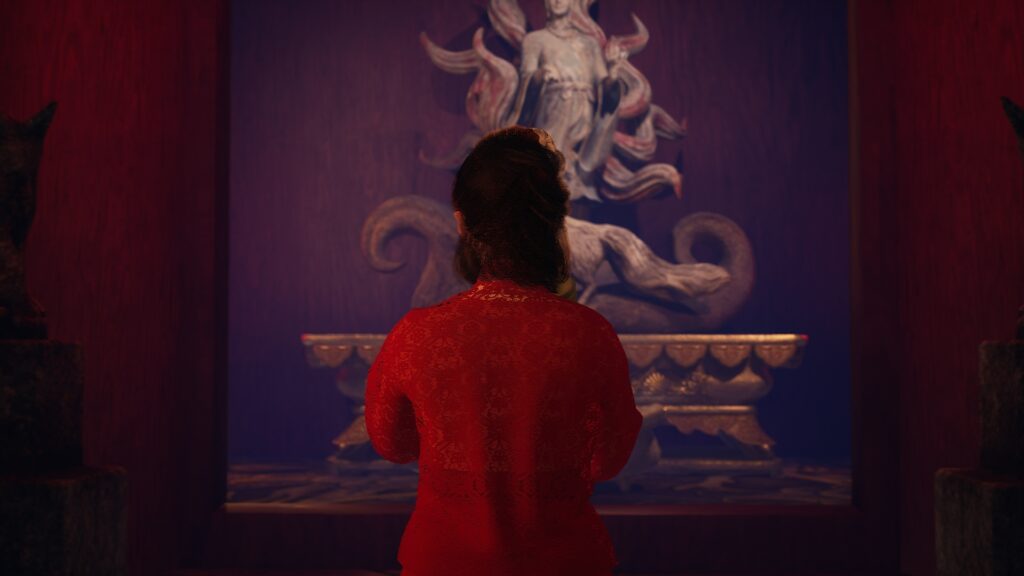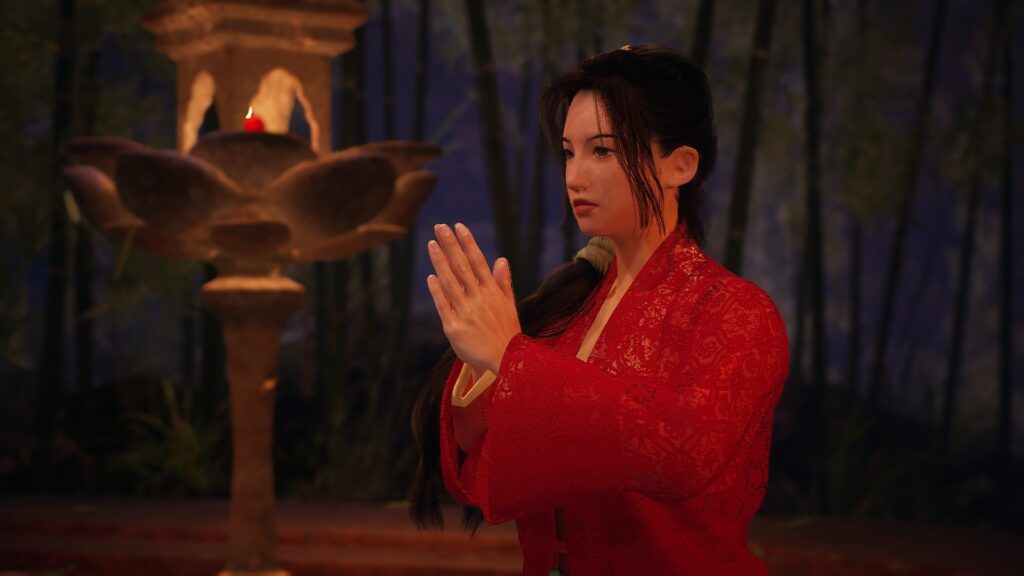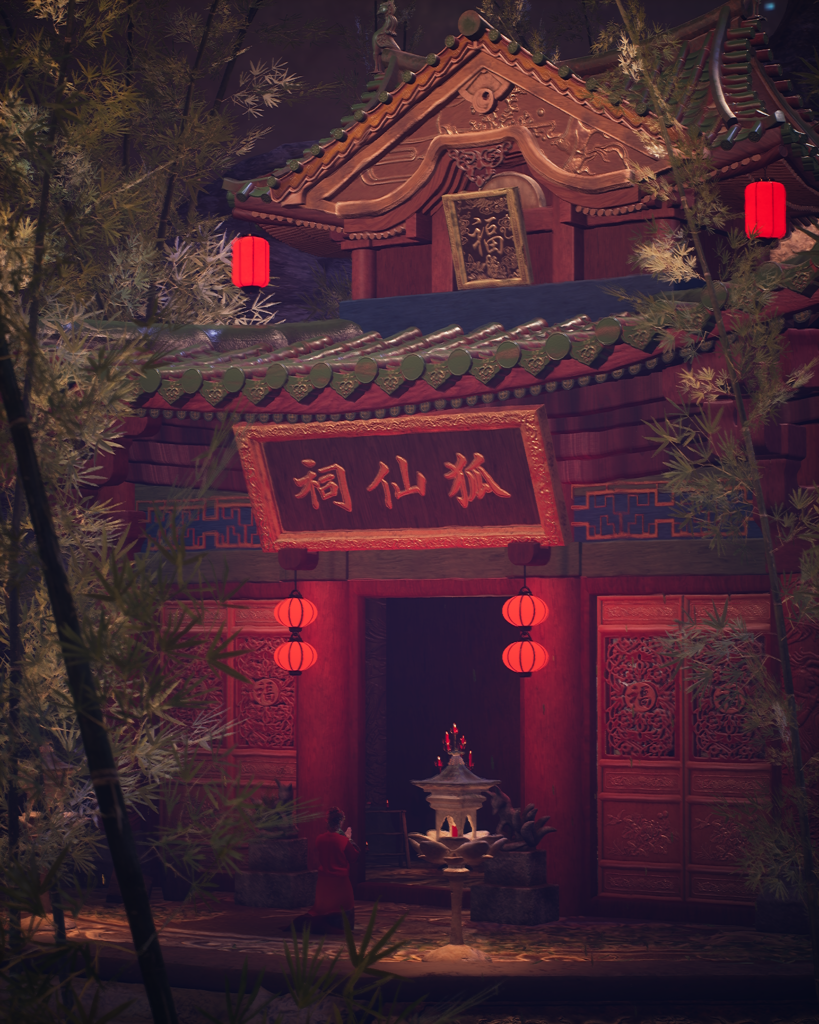Story:
It is said that the fox Shrine was in full bloom a thousand years ago. There is a ceremony every year in the first month of the year. In addition, the village of believers has come to worship lively and extraordinary. People come to ask for a blessing for those they care about, hoping that their loved ones can be healthy and safe. Throughout the ages, various legends have come and gone. Even now, people often talk about the “Huli-Jing,” which shows that the fox and multiple animals have been with some supernatural Power through a long period of survival and adaptation. The Fox Shrine is also dedicated to various gods and goddesses for people to pray for blessing, meaning peace.
Inspiration:
In the early stages of Huli-Jing’s production, the conceptualization process is very important. This step determines how the world will look like when it is finally presented to the audience. Once I had written the story for Huli-Jing, I looked at a lot of reference images and short films. I then collected the inspiration and reference images that I would need for the production. This process included defining the art style of the scene, and color scheme, and picking out key visual elements to ensure visual consistency throughout the scene.
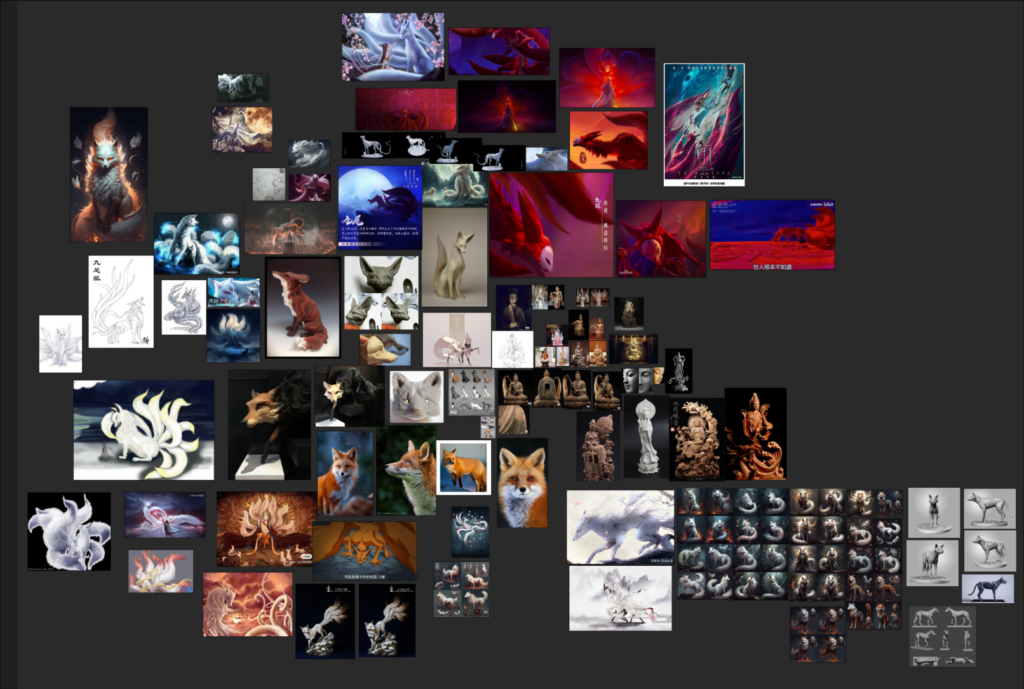
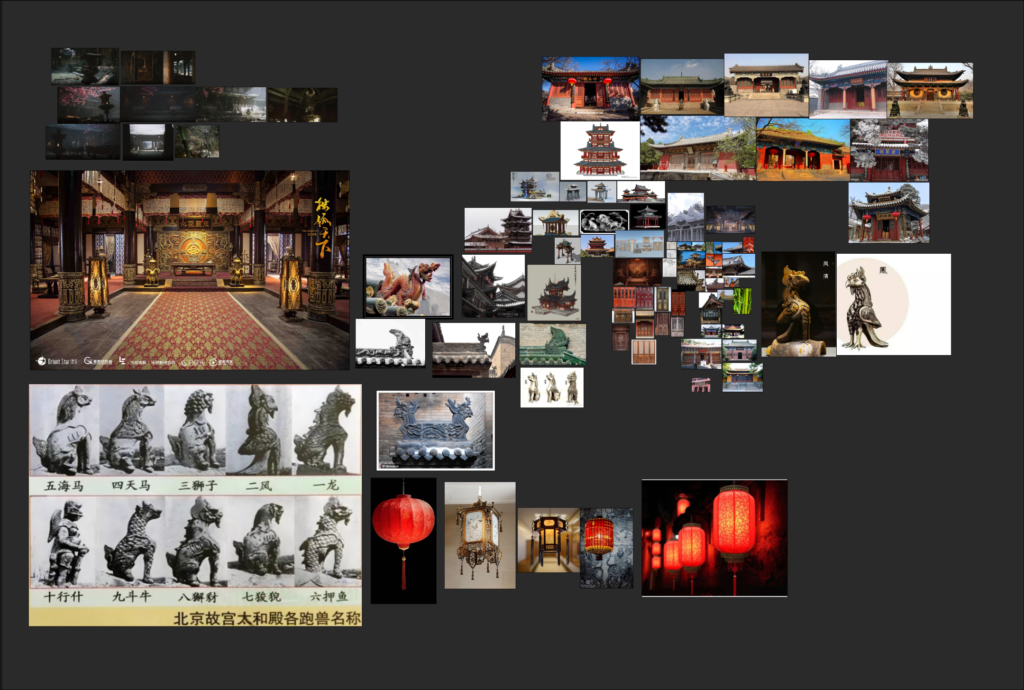
Pre-Production:
The main element in the image is “Huxian-Ci,” the rudimentary temple in the center of the image. A female character is praying in front of the temple. Behind the temple there is a nine-tailed fox.
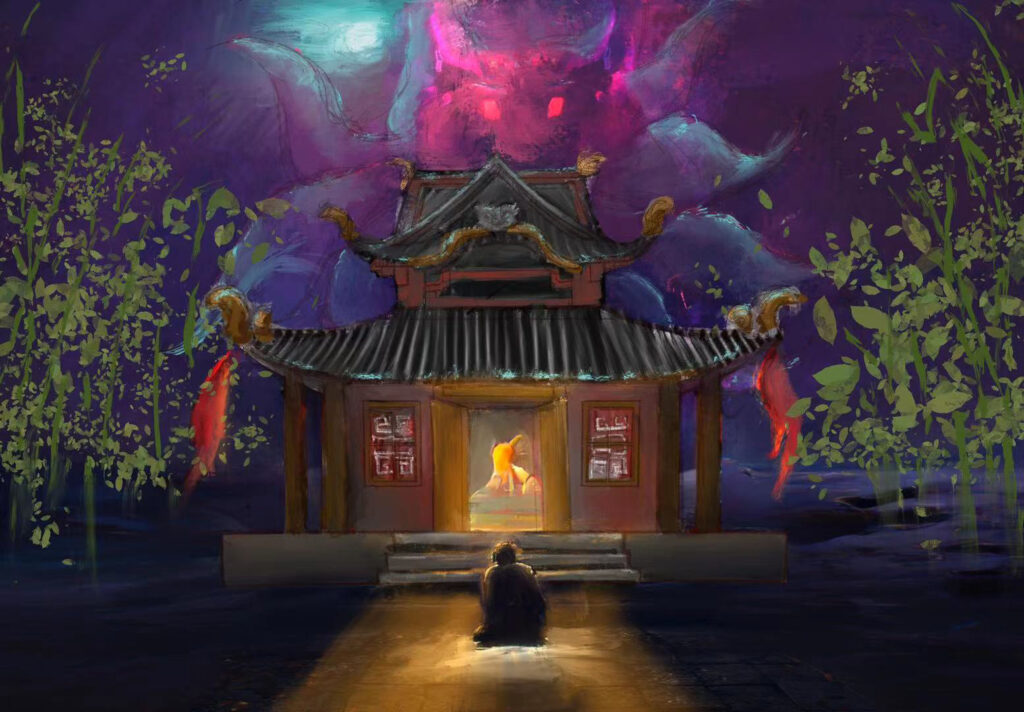
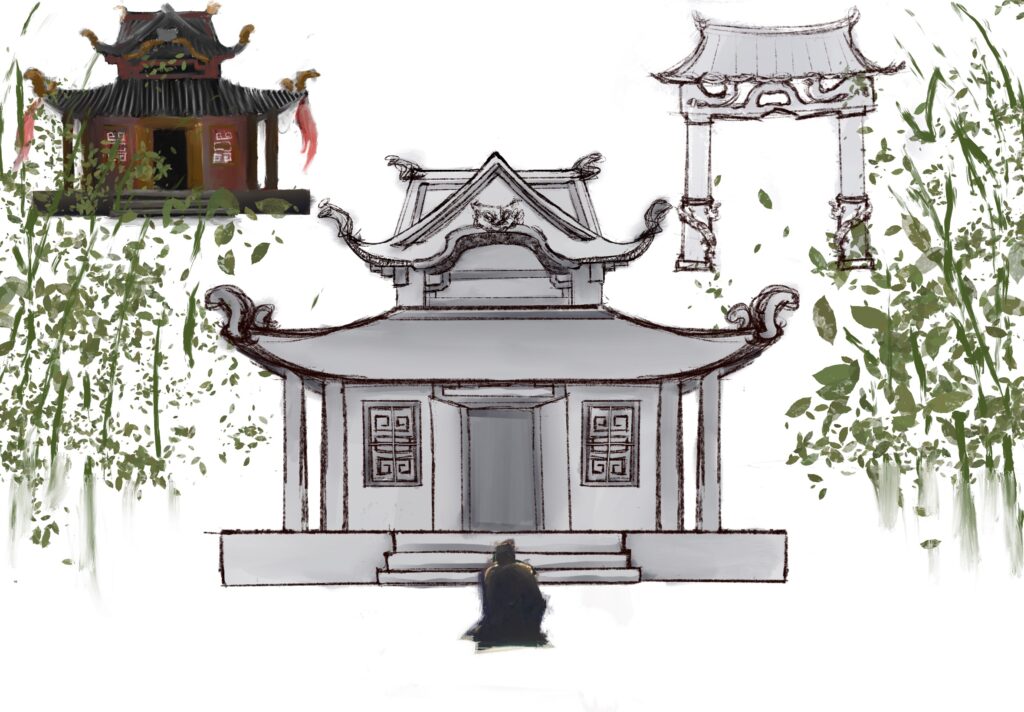
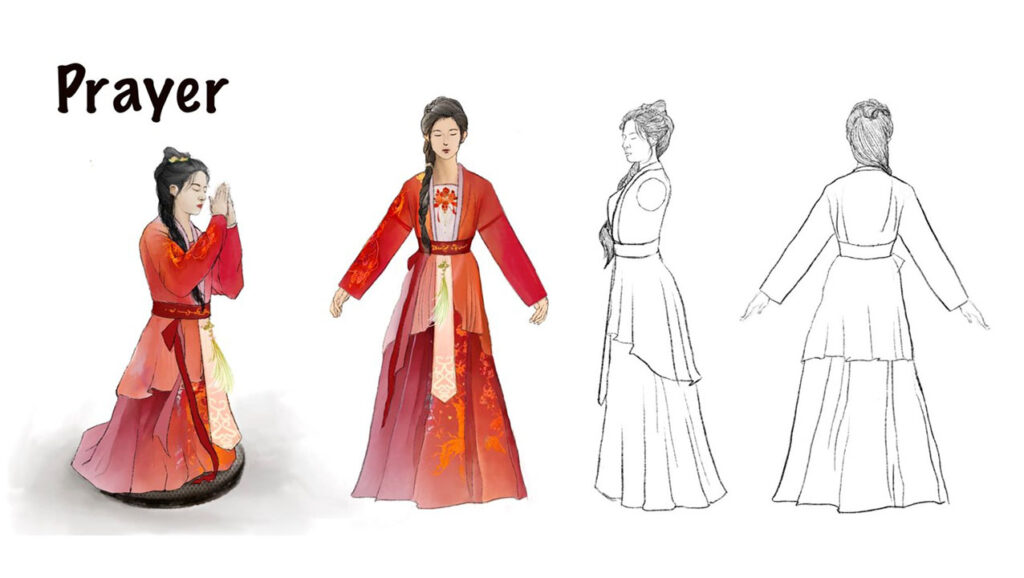
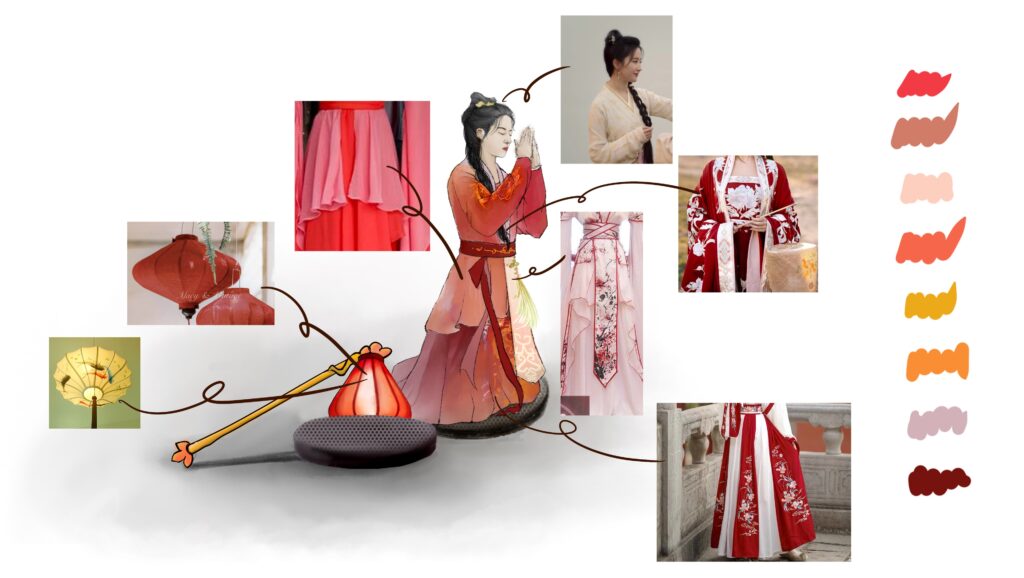
Blockout:
After all concept art was finalized, I started working on building the initial modular in Unreal Engine. This preliminary environment build can give me a strong reference in the next modeling process. I started by creating the basic structure of the main building and some props in Maya while also establishing the dimensions of key assets.
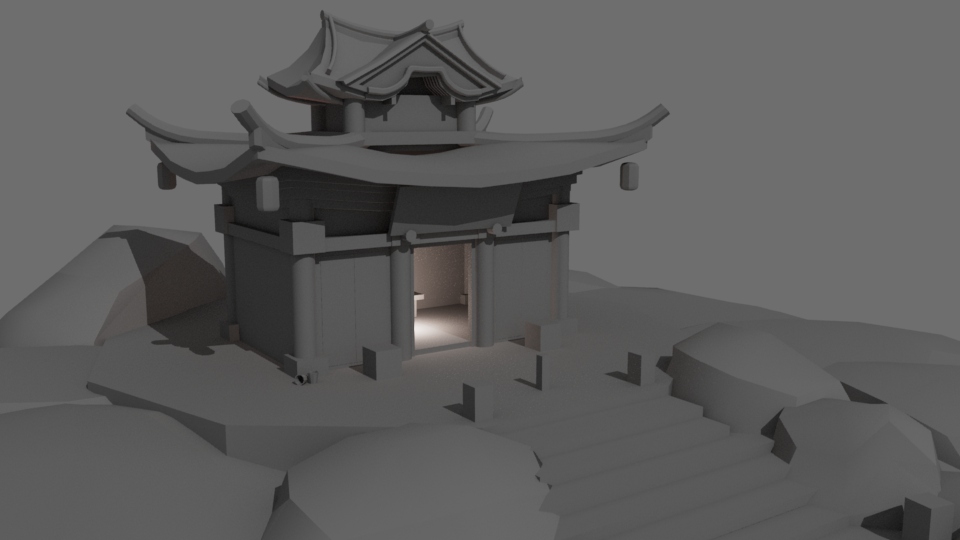
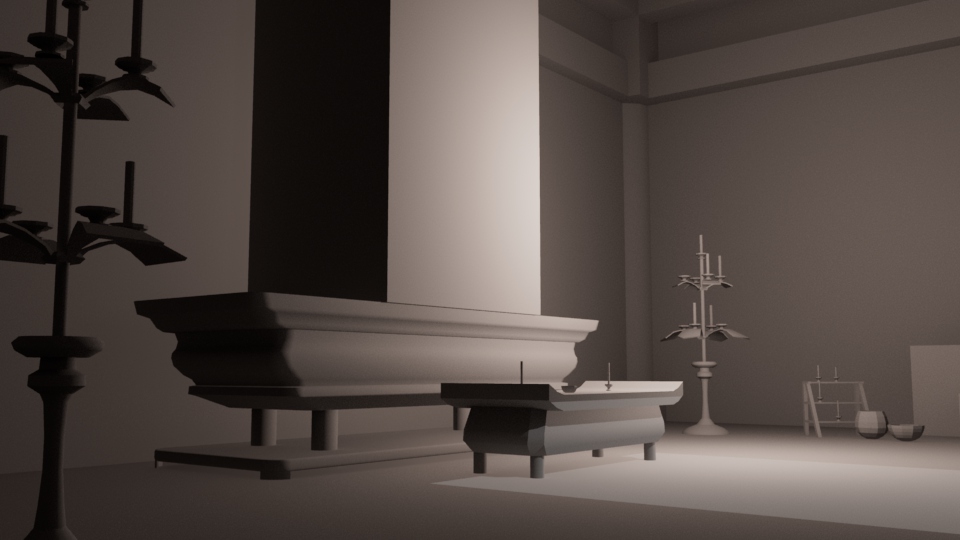
Temple:
My primary focus was on preparing to sculpt the fox spirit statue. After gathering and organizing my reference images, I immediately began sculpting in ZBrush. Initially, I intended to make a sculpture of a fox spirit, but to convey a clearer message to the audience, I decided to add nine tails to the main figure and a smaller fox at her feet. The Fox Spirit has a human appearance with nine tails, while the smaller fox has just one tail. This symbolizes that nine-tailed fox holds a high status in the fox clan. Once I finished the model, I started making the textures for the little fox and the fox spirit separately in Substance Painter.

In terms of the temple, I invested a lot of time on the double-roof, doors, and windows. In order to achieve a realistic effect on the roof tiles, I chose to model the tiles, stacking them, rather than relying on the presented height mapping technique. The same goes for the windows and doors. In order to make the hollow patterns realistic, I didn’t use transparent mapping, but instead used Alpha mapping in ZBrush to extract the real hollow shapes from the model. Regarding the reliefs found above the foundations, doors, plaques, and stone pillars, they were all created using height mapping. I painted them in Substance Painter using Alpha mapping, and then added dirt spots and grains through the generator for added realism.


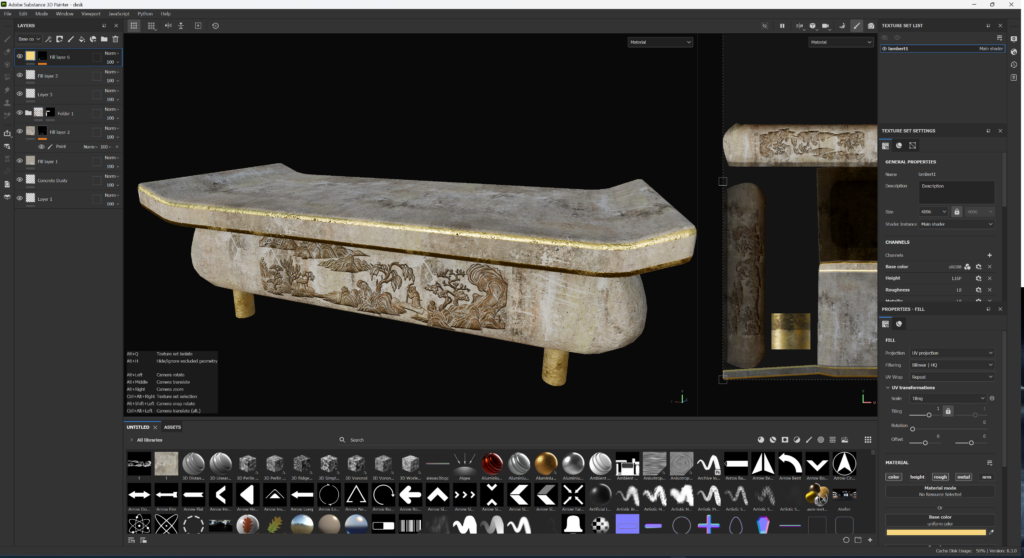
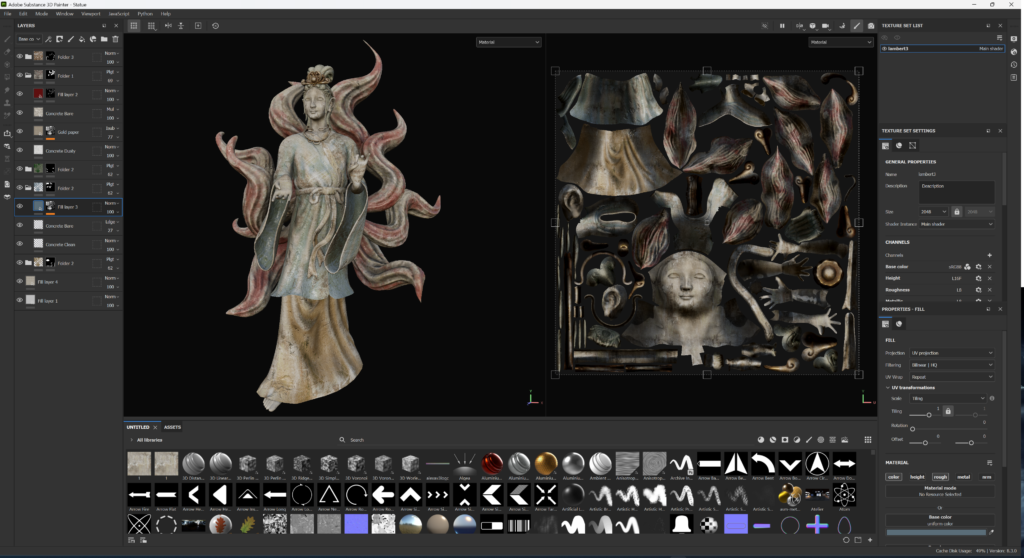

Prayer:
I followed the process of modeling the characters in ZBrush, and then performed topology and texturing using Wrap 4D. For the clothes, I used Marvelous Designer to create them and then topologized them in Maya, converting the attributes. Finally, I made the textures in Substance Painter.

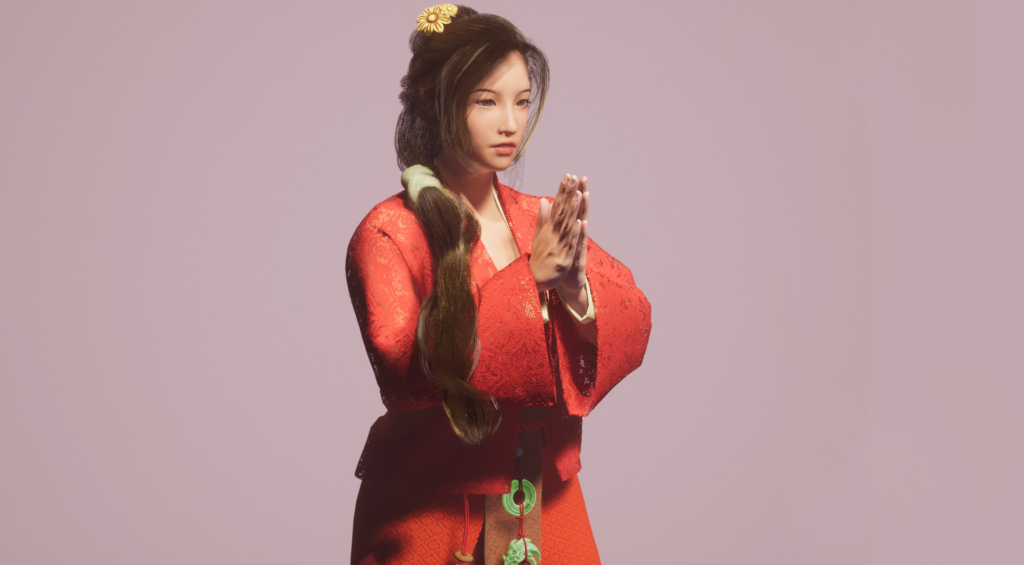
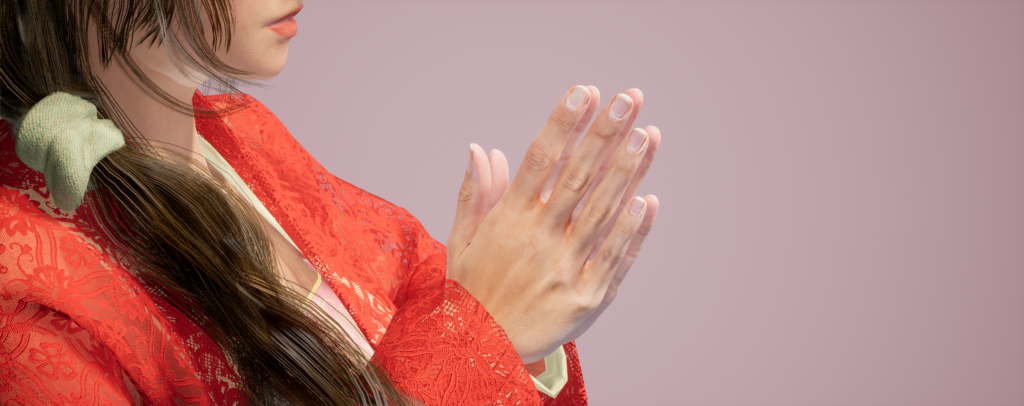
Huli-Jing:
For the Nine Tailed Fox, I began by sculpting a 3D model in ZBrush. Since it would later be covered with fur, I didn’t sculpt it in excessive detail. Next, I used ZRemesh in ZBrush to create a lower-polygon model. Afterward, I did UV maps in Maya and made the textures in Substance Painter. Returning to Maya, I developed the fur description using XGen, adjusting properties like hair density, root width, curvature, and noise. Once this XGen step was complete, I exported the hair data as an Alembic file and imported it into Unreal Engine. Along the way, I set up the material and shader for the fur in Unreal Engine, achieving the silvery-white color I desired. Before placing the nine-tailed fox in the scene, I did a render test in a new level to ensure it rendered realistically.
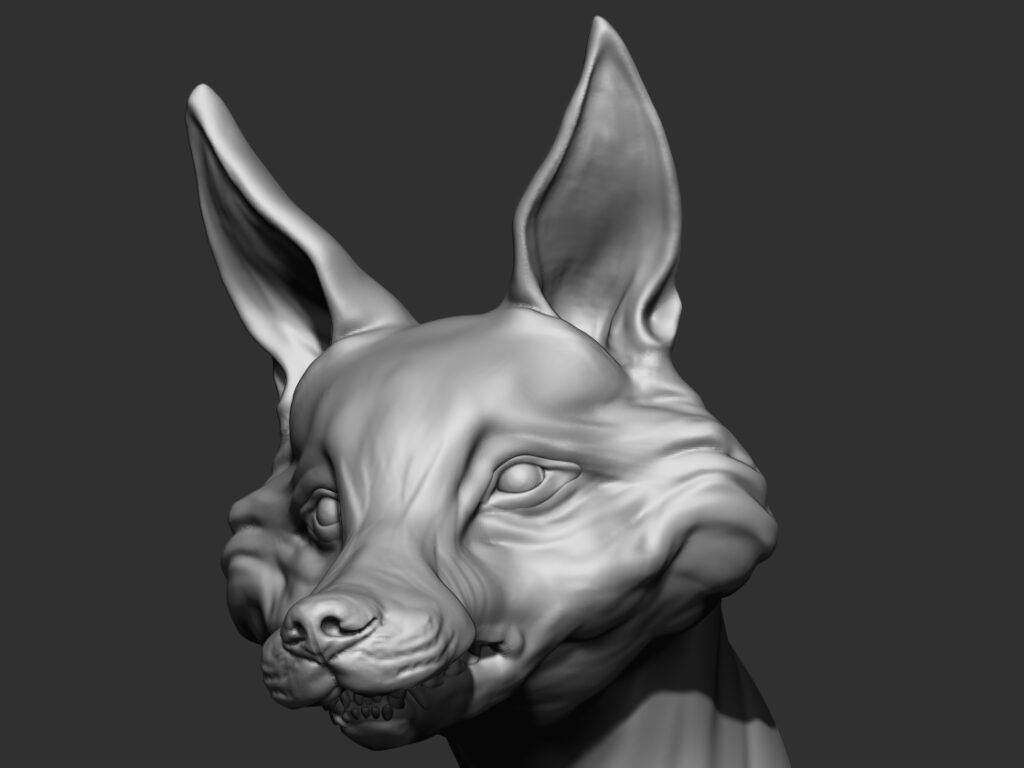
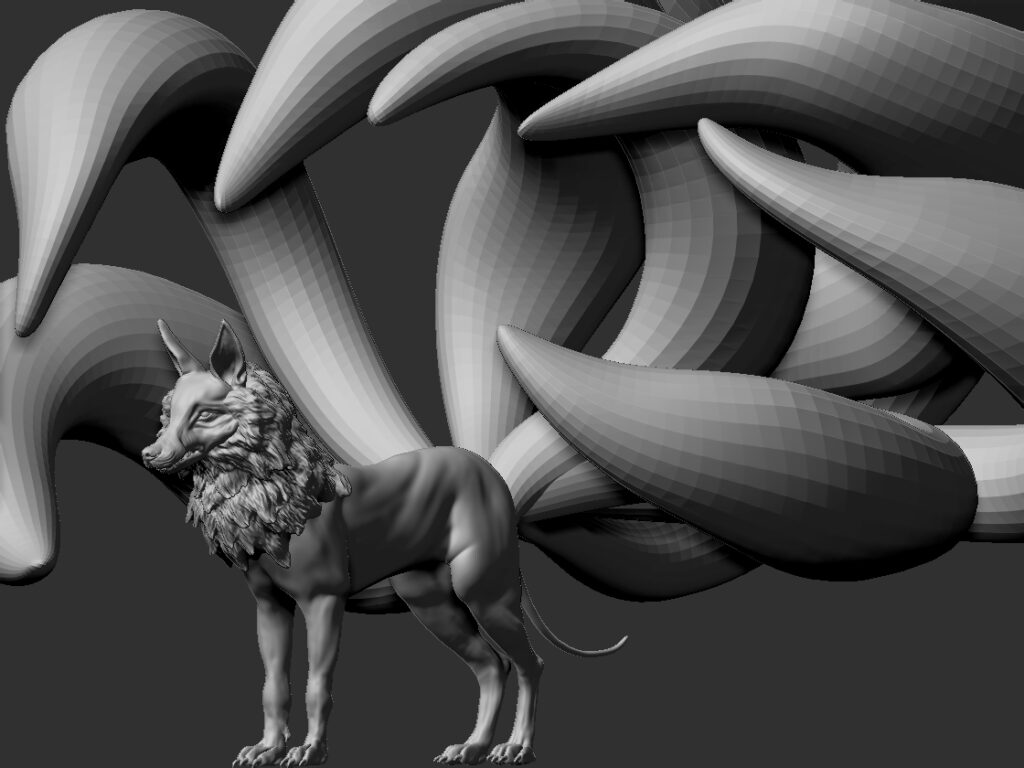
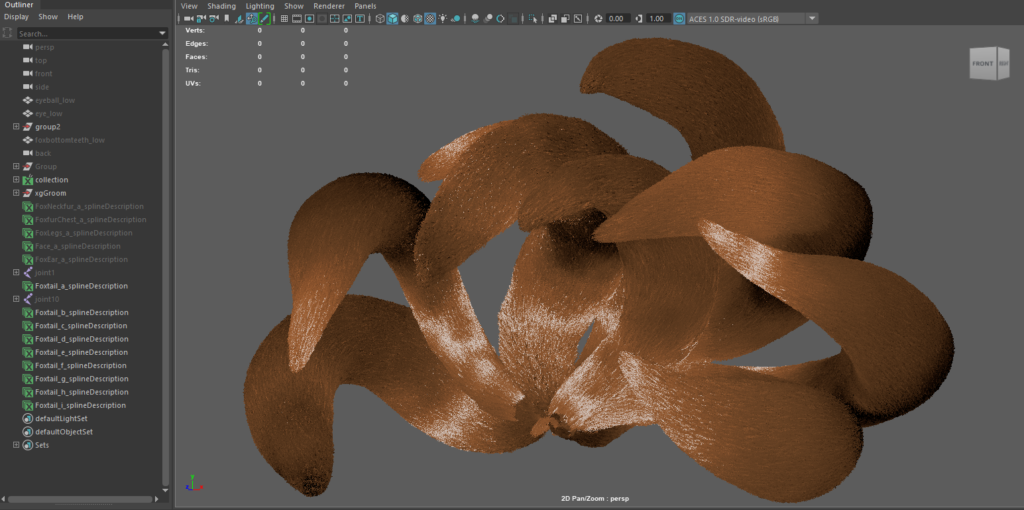
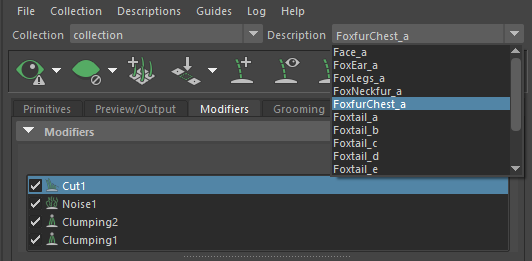
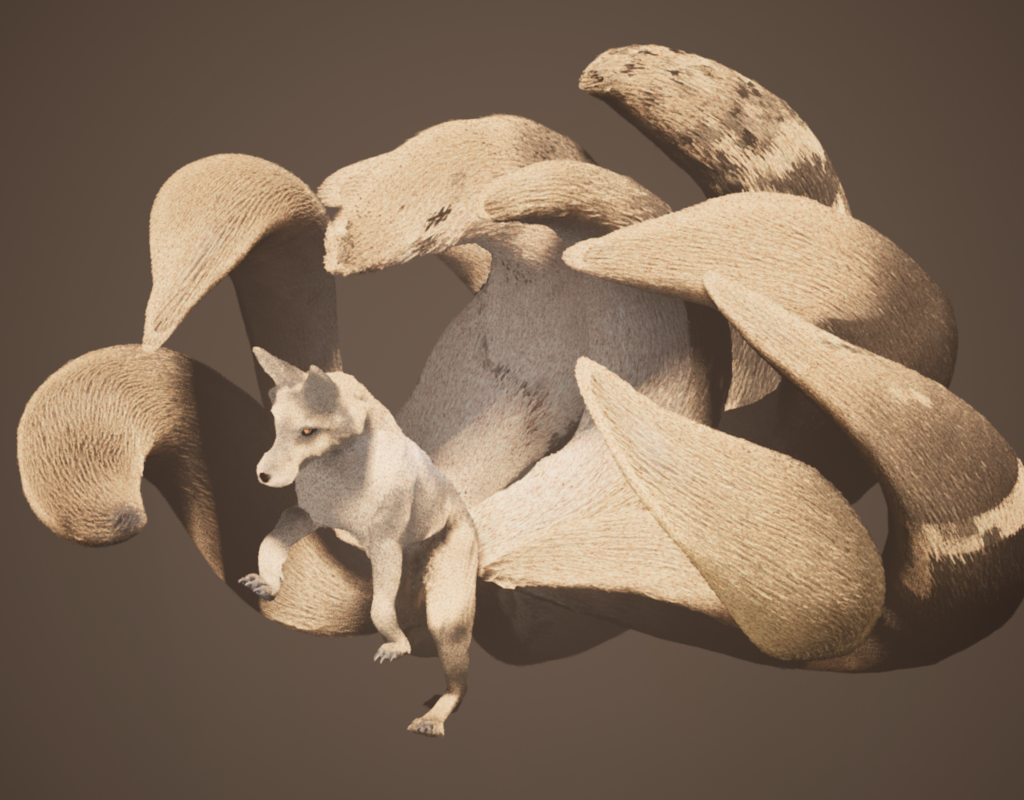
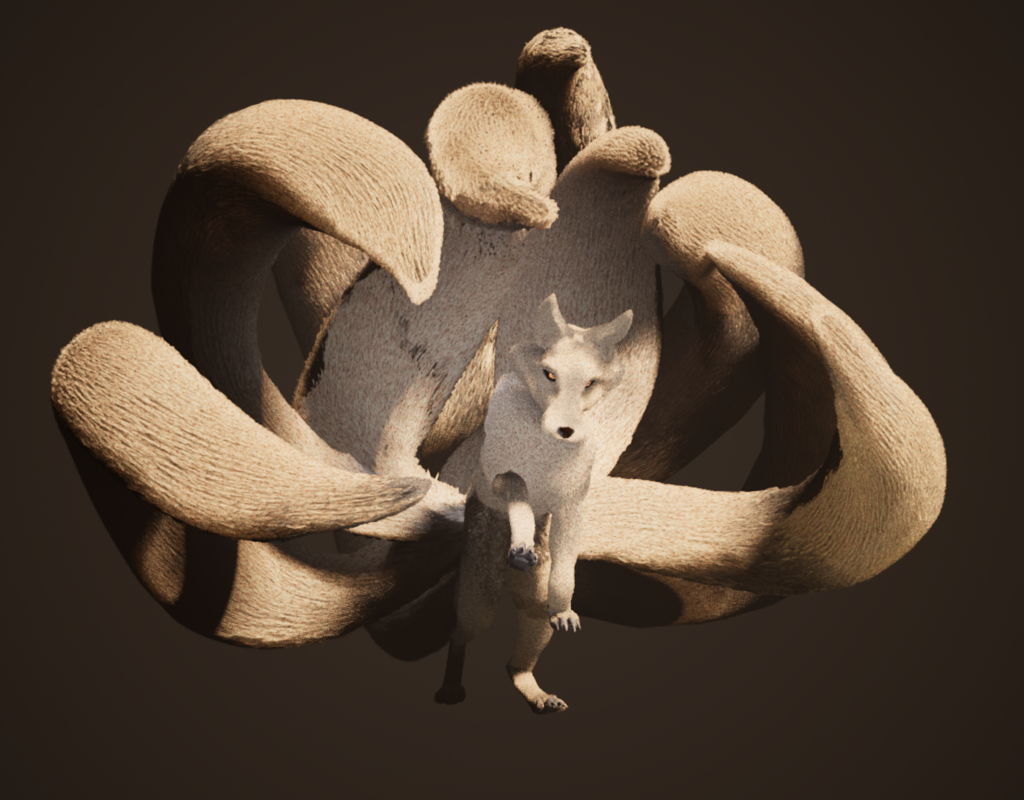
Bringing All Together:
Since I had previously set the size and dimensions of each modular during the block-out stage, replacing assets into the designated positions was a next process. One thing to mention is the bamboo forest, because I can’t possibly place them one by one. That would be tedious and time-consuming. So, I chose to use the foliage brush. I created five different types of bamboo models and converted them into a foliage brush. This allowed me to easily add various bamboo types and adjust parameters such as density and quantity. I could then use the brush to place bamboo where needed, making real-time parameter adjustments to suit the scene. Also, I could manually add or remove any unsatisfactory parts. In addition, I created several blueprints to package components together, which can enhance efficiency for using multiple times. For instance, I packaged items like candles and flames.



Layout & Cinematography:
I set the stage for the film by placing characters and props in the modeled environment, then turning the camera on, and using the camera movements to support storytelling. The cinematography in Huli-Jing is more realistic. Camera work also conveys the emotional arc visually by accentuating the point of view. I follow the step road with the camera as if the audience is walking right along this way. The camera travels to the ridge prayer’s shoulder, before going away to wait for the audience to have a moment to see what is inside.
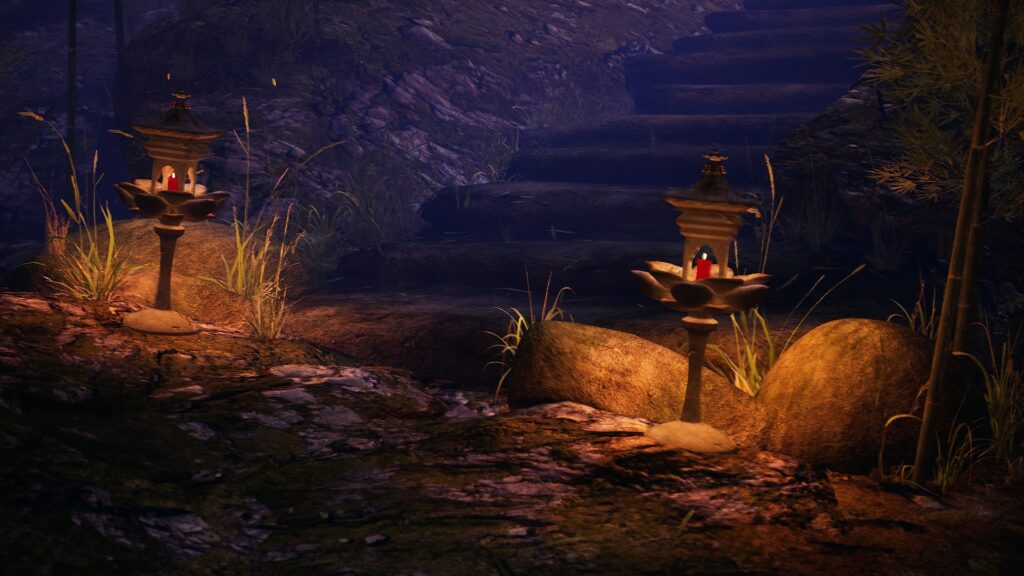
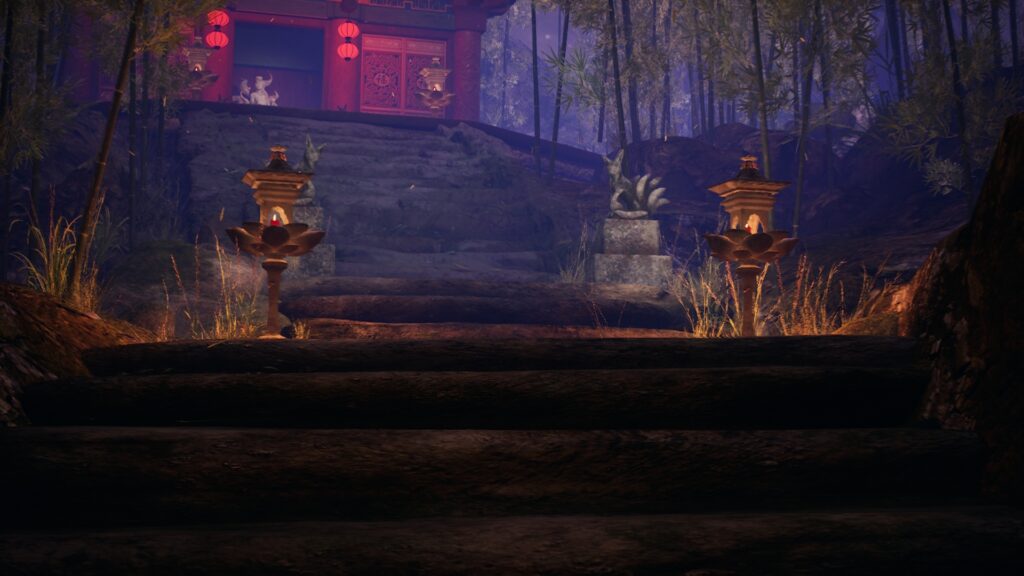
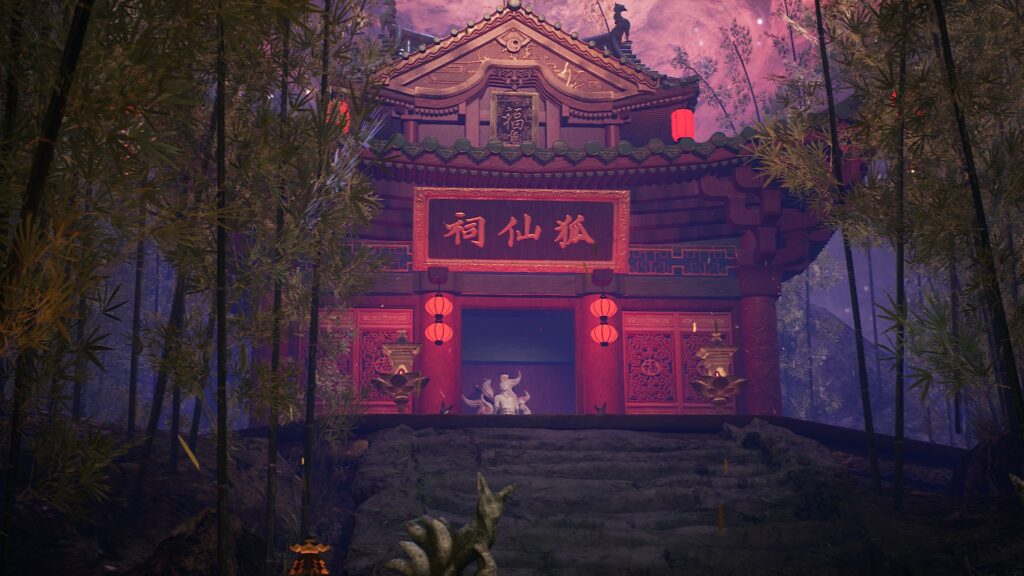
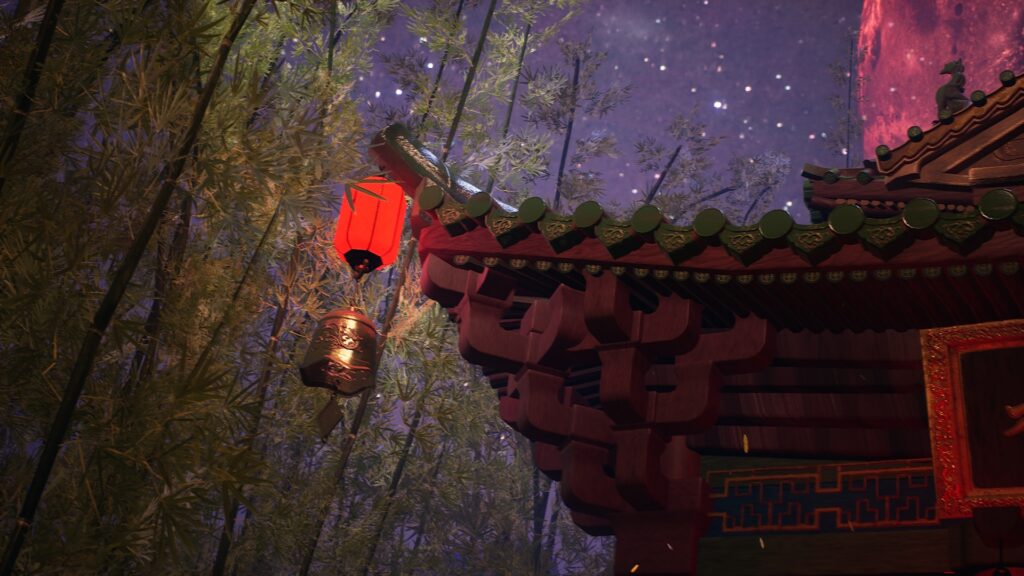
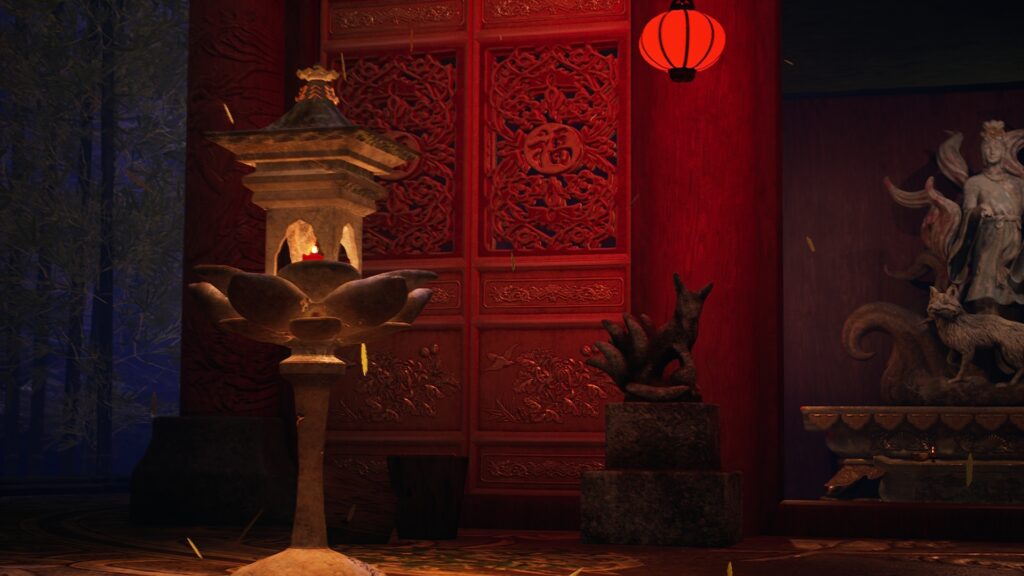
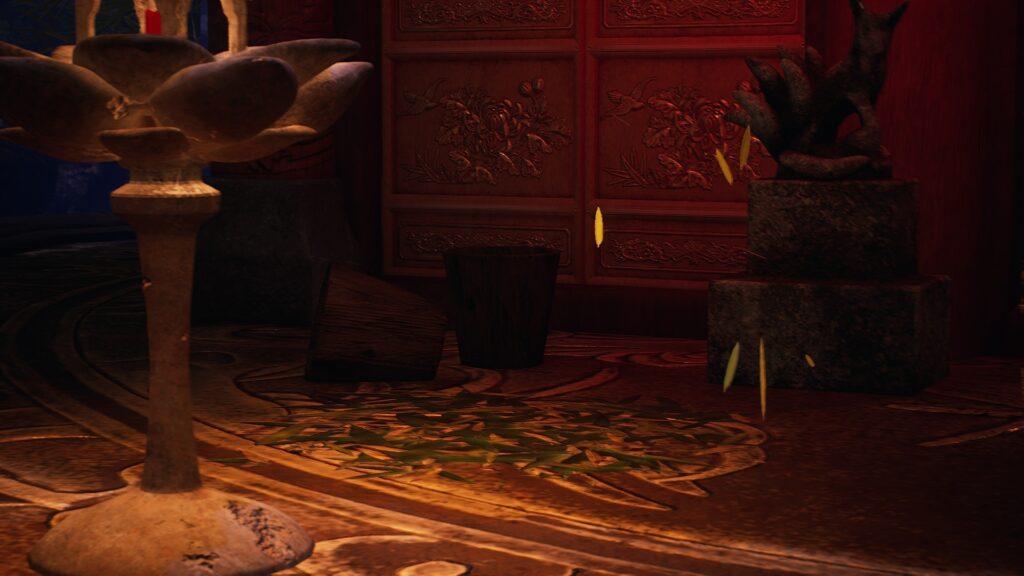
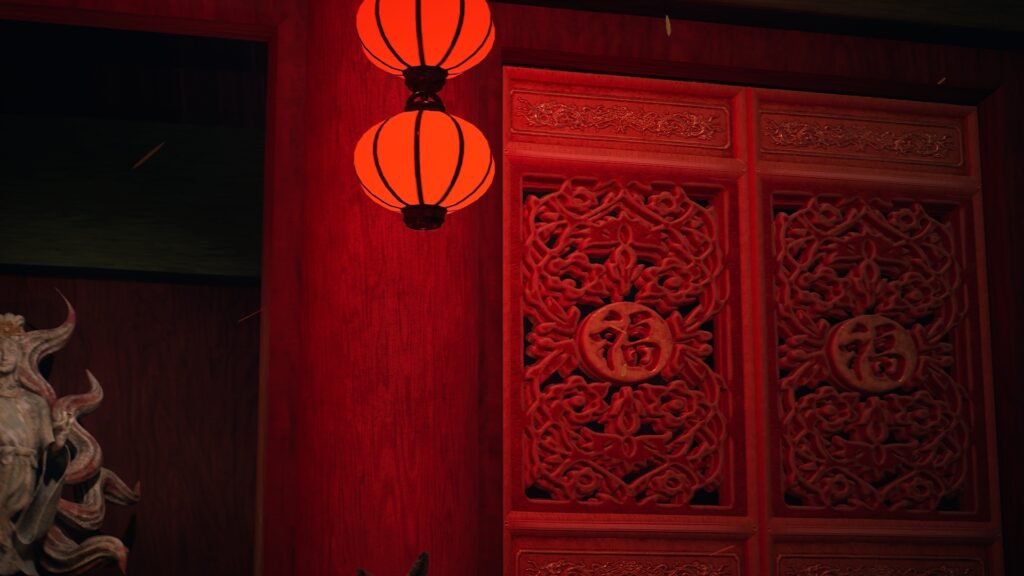
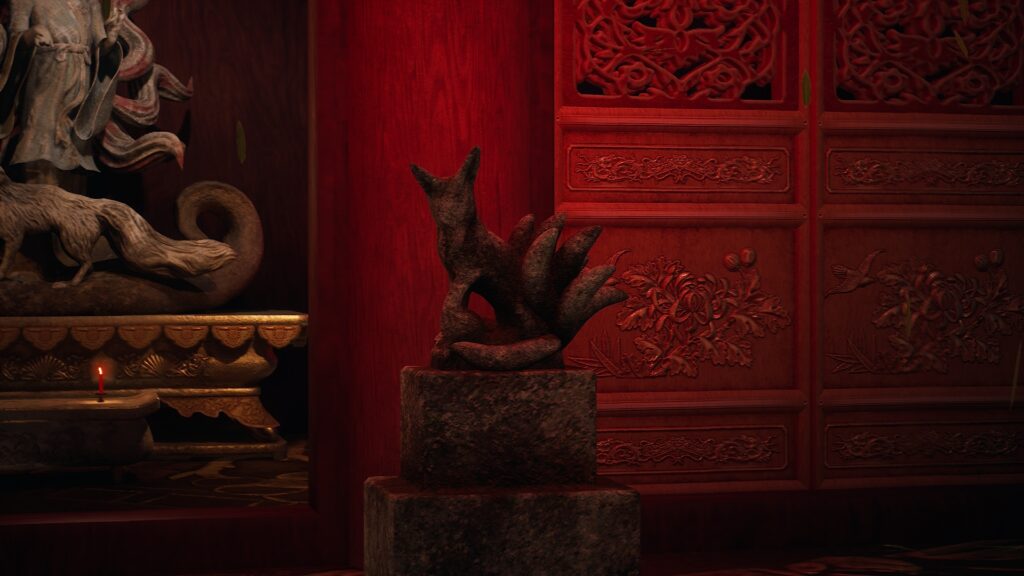
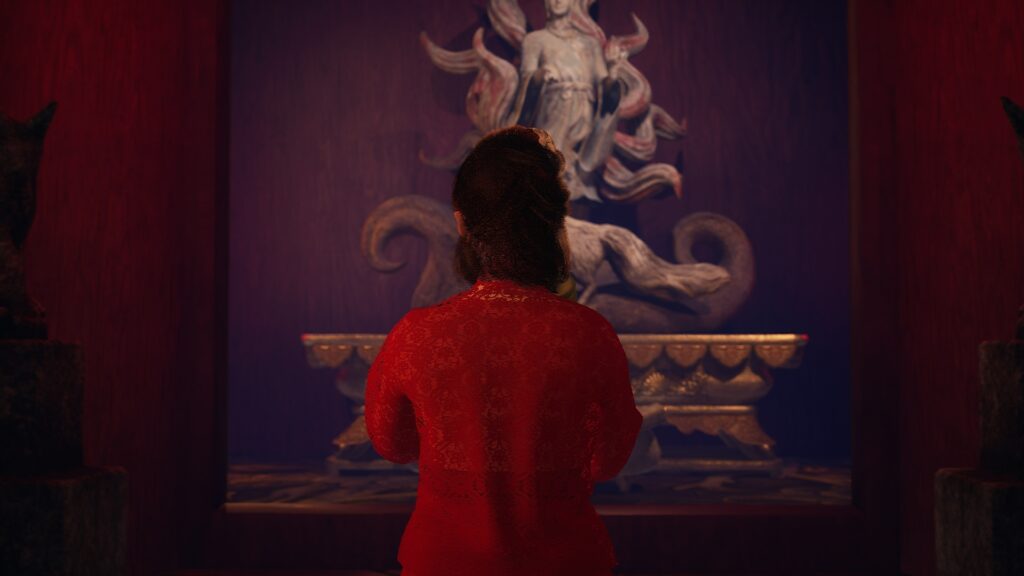
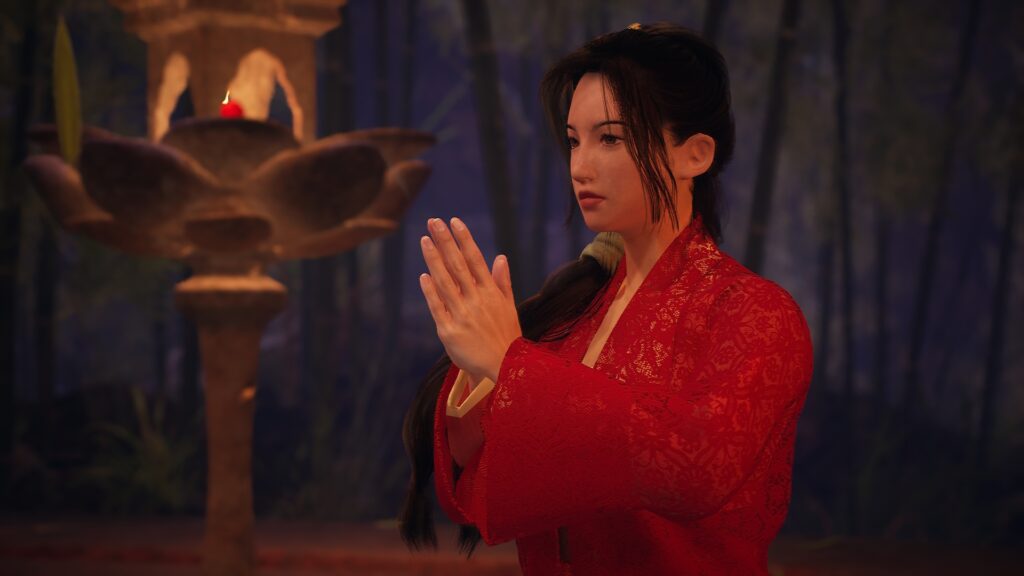
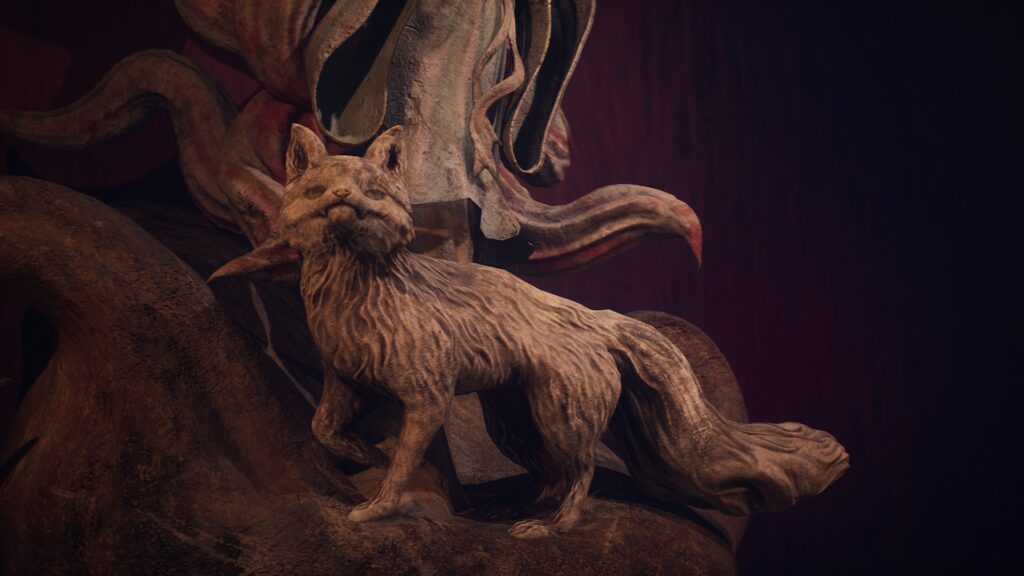
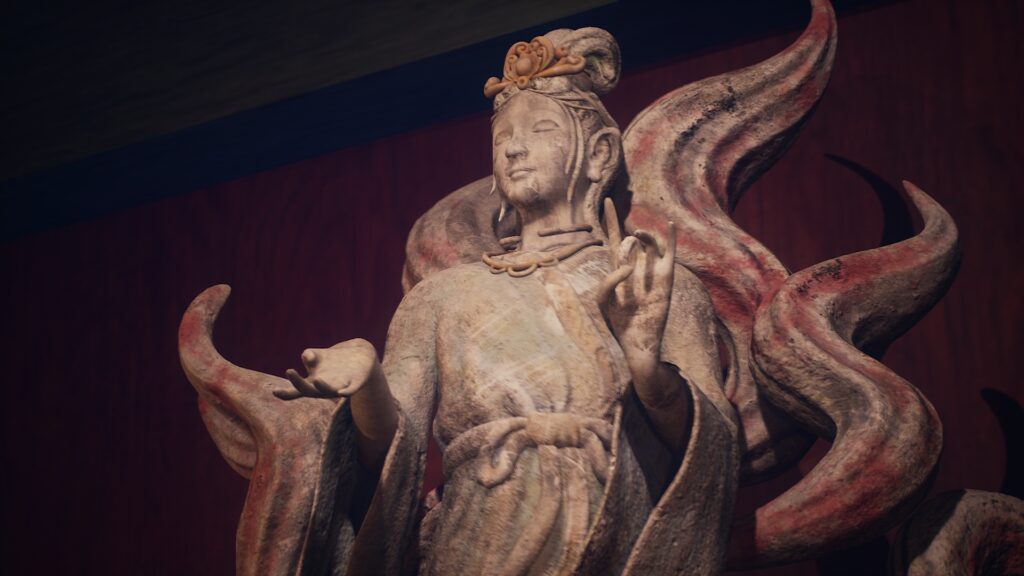
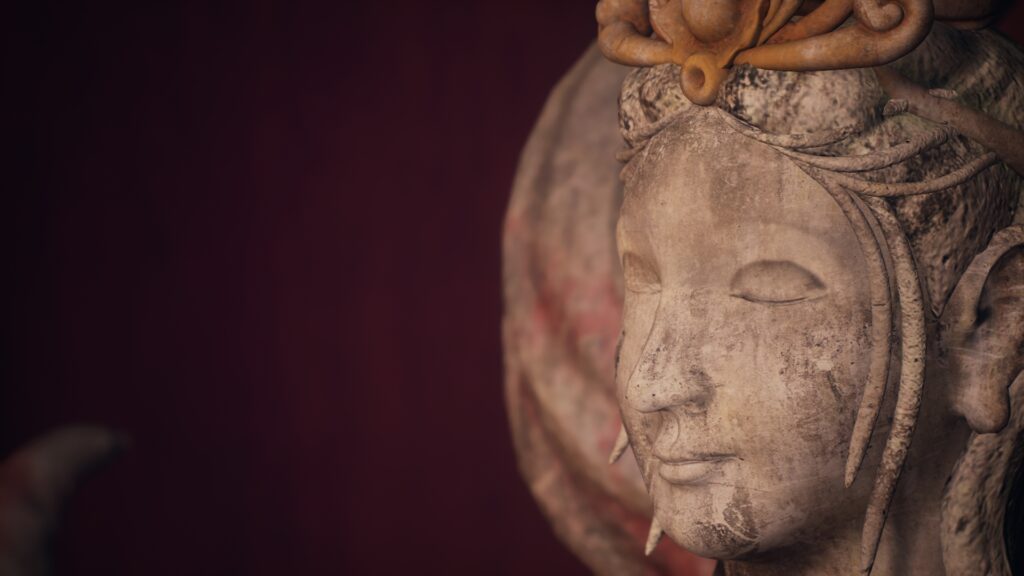
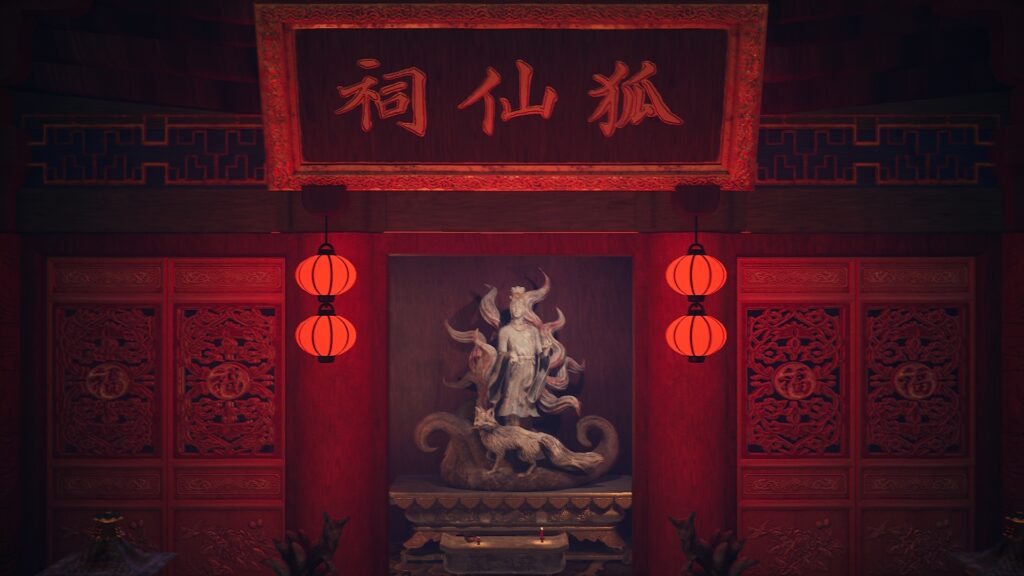
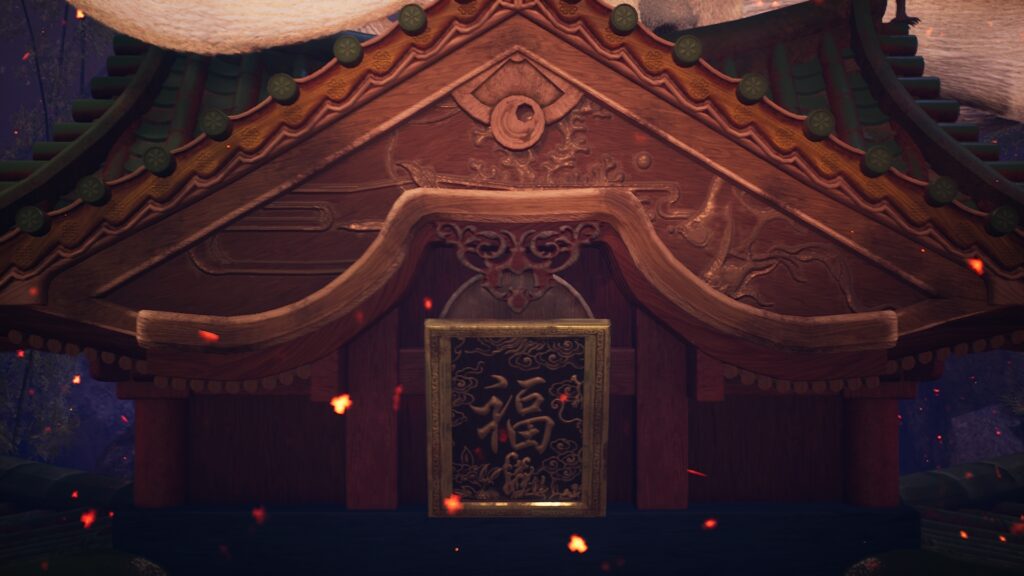
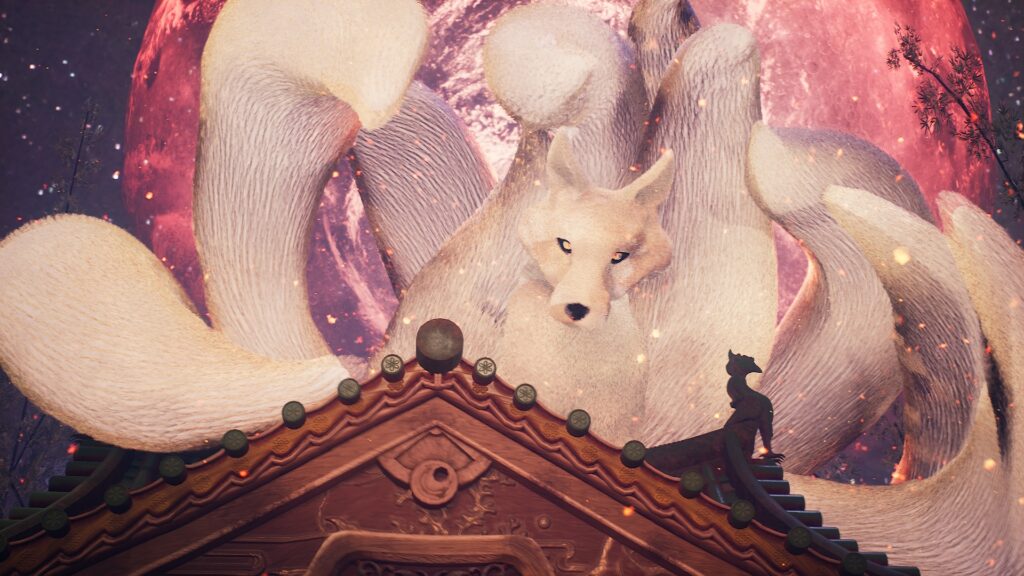
Effect & Lighting:
Lighting is a key element that adds to the sense of drama and believability in Huli-Jing is the myste-rious lights. The atmosphere and mood of the scene are as important if not more important than specific details within in scene. The Post Process Box is another key step. I added a wave effect into it for enhancing the scene’s atmosphere, giving the scene the appearance of airflow. It makes the scene seem more magical and surreptitious. First, I began by creating a material blueprint for the Post Process Box. Within this blueprint, I simulated the wave effect by using a combination of noise nodes and noise maps, and adjusting parameters to control factors such as size, intensity, frequency, and speed. Then, I add custom parameters so that allow me to adjust the strength of the wave material in real-time within the Post Process Box.
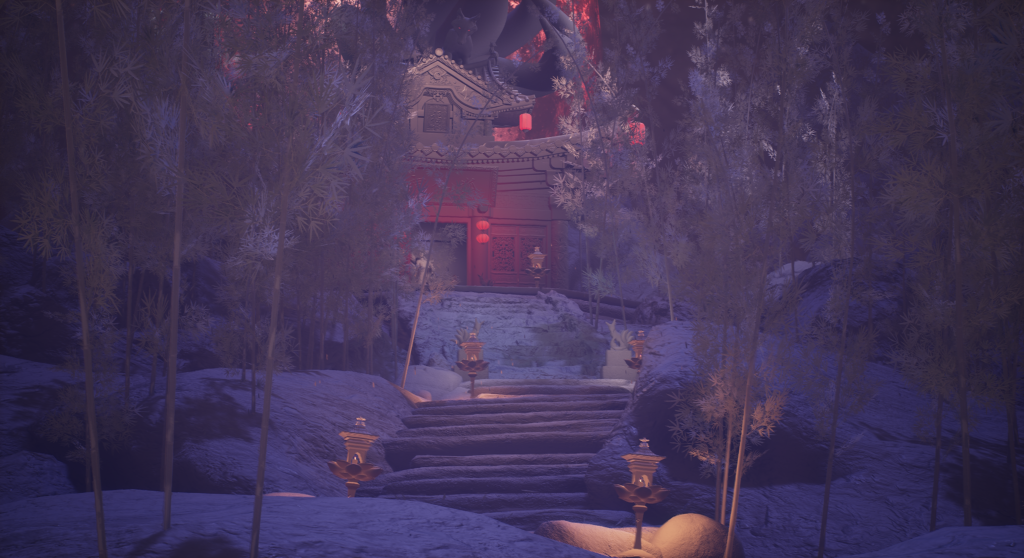
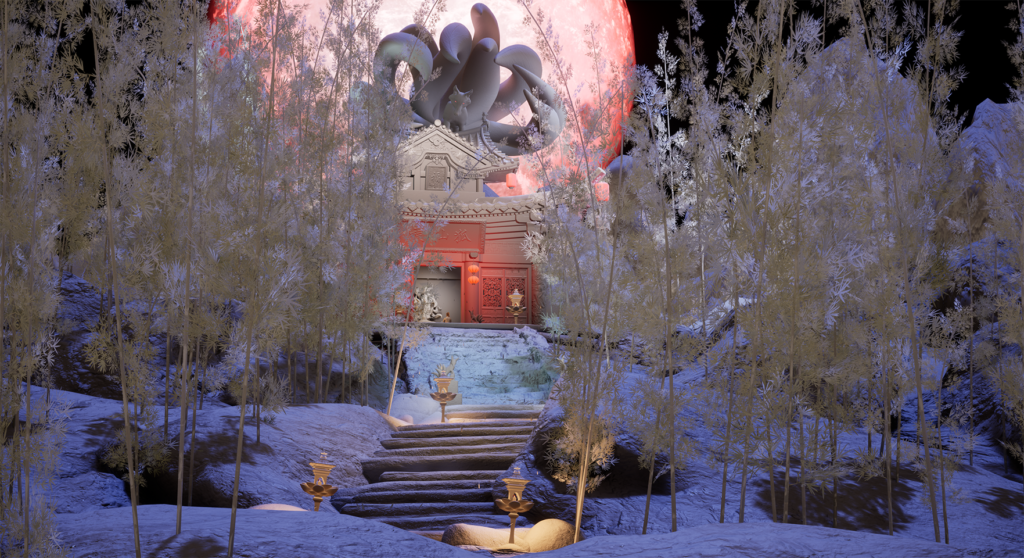
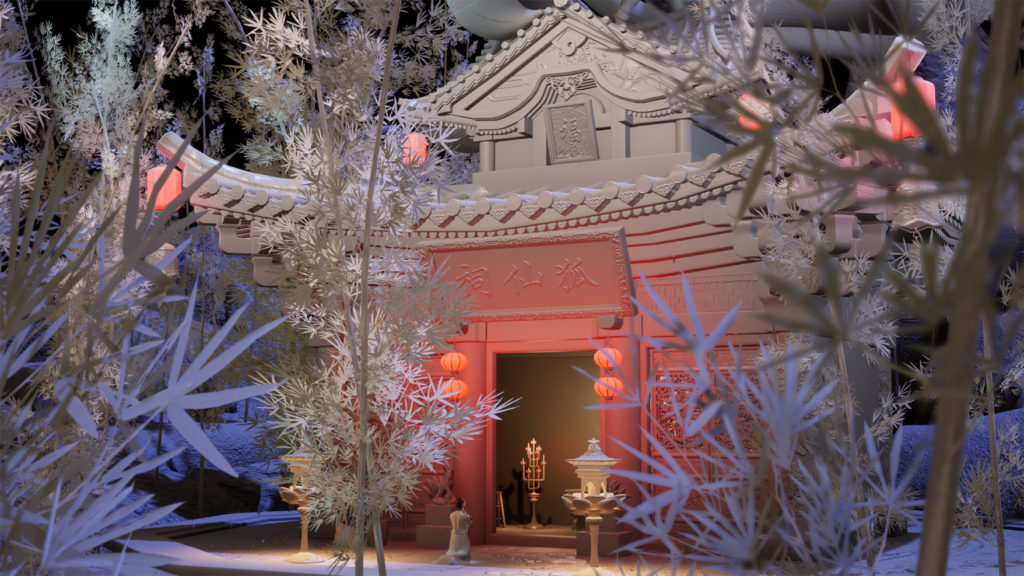
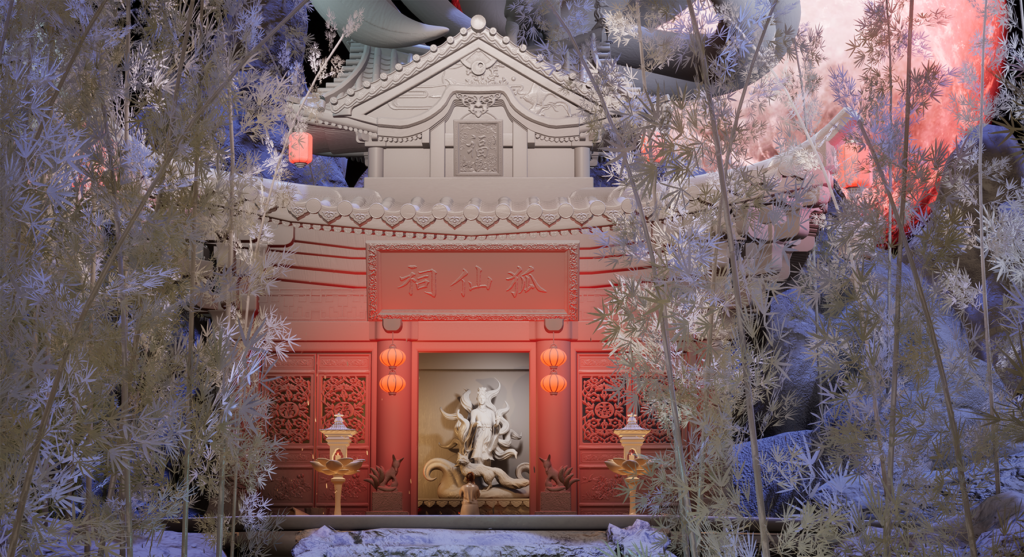
I utilized Niagara to create candle flames and floating bamboo leaves. Initially, I created the Niagara system and configured the particle emitter to control the flame’s position. I adjusted parameters and added particle modules like lifecycle, velocity, and size to define the fire’s appearance. Afterward, I made a material for the fire, refining the texture, color, and transparency, and applied it to the candle.
In the bamboo forest material, I utilized the ‘World Position Offset’ node to manage the position offset of the foliage. For instance, I incorporated the ‘SimpleGrassWind’ node and fine-tuned its wind parameters, including speed, weight, and intensity, to create natural movement in the bamboo.
Regarding the moon in the sky, I applied two layers of textures: ‘Lunar Surface’ and ‘Cloud Layer.’ So that it can move in layers to achieve realistic effect.
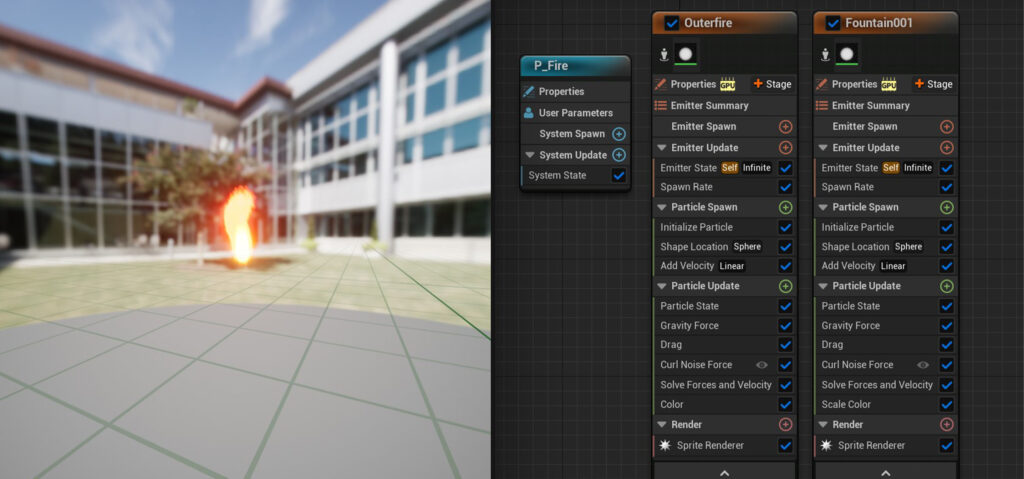

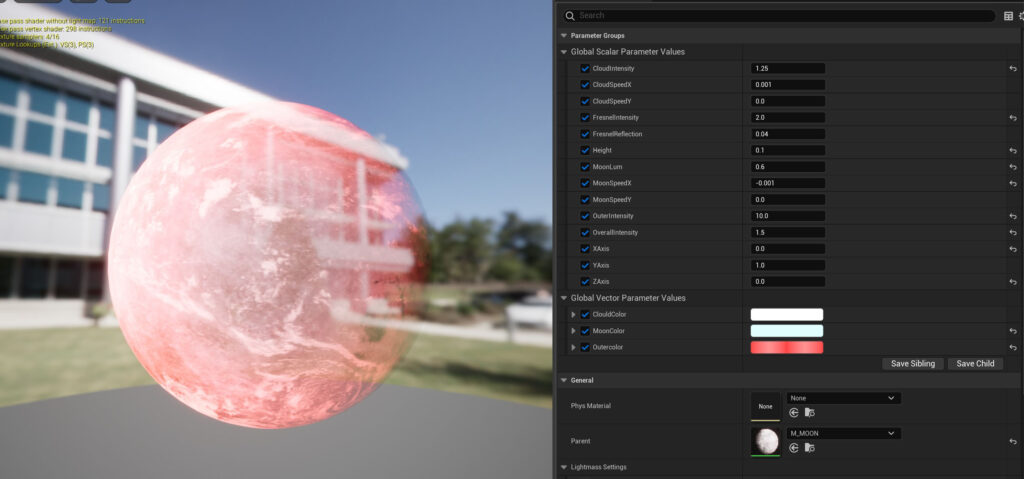
The production of Huli-Jing has concluded. Being a personal project, I navigated the entire process independently, from conceptualization to final delivery, meticulously planning and executing each stage. This journey not only enriched my 3D skills but also honed my project management and problem-solving abilities. I encountered diverse technical challenges, compelling me to seek information, adopt new workflows, and develop proficiency in various digital art tools and techniques.
This project allowed me to visualize my creative ideas tangibly, especially in modeling intricate details and texture mapping, such as creating bamboo forests and rocky terrains. I adjusted lighting setups multiple times to enhance the scene’s narrative and believability. Through these experiences, my personal style and aesthetics have evolved gradually. I will endeavor to refining and developing this style in my future projects.
Render:
